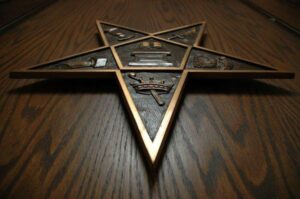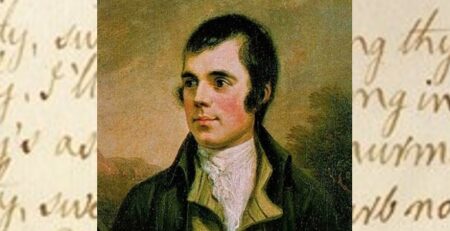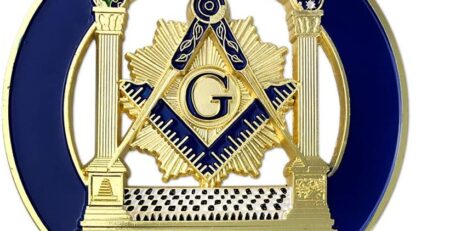What is Freemasonry?
What is Freemasonry?
Freemasonry is the world’s most powerful fraternal organization. Although its origins are lost in the unrecorded history of medieval times, it was formally organized in London, England, in 1717. There are currently over 3 million Freemasons active worldwide, with 1.1 million in North America.
With 75,000 Masons and 450 lodges, Ohio has one of the largest Masonic memberships of any state in the country. Freemasonry, as a fraternal organization, brings together men of great character who, despite their differing religious, ethnic, or social backgrounds, share a belief in God’s fatherhood and human brotherhood.

Early 30 years of Freemasonry:
Within thirty years, the fraternity had spread across Europe and, with it, the American colonies. Then, in colonial America, Freemasonry became very popular. George Washington was a Mason, and in Pennsylvania, Benjamin Franklin, as well as Paul Revere and Joseph Warren in Massachusetts, served as the fraternity’s head. In Massachusetts, Joseph Warren, a silversmith, did the same. John Hancock, John Sullivan, Lafayette, Baron Fredrick von Stuben, Nathanael Graham Greene, and John Paul Jones were among the other notable Masons who contributed to the founding of America. The Supreme Court was formed into its gift type by another Mason, a judge legal expert.


Over the centuries, Freemasonry has grown into a global organization that provides opportunities for personal and social improvement, as well as individual involvement and financial assistance. It was one of the organizations most responsible for spreading Enlightenment ideals such as the dignity of man and individual liberty, the right of all people to worship as they wish, the formation of democratic governments, and the importance of public education during the late 1700s. Masons backed Europe’s and America’s primary public universities.
EXECUTING YOUR POTENTIAL FOR LIVING: A BLUEPRINT
Freemasonry is a personal journey toward becoming a far better father, husband, friend, national, and man, supported by a variety of men at various stages of the same journey. Masonic Education has been launched from the Masonic Lodge for hundreds of years. And it serves as a common ground for Brethren from various backgrounds to meet, exchange ideas, offer support, and form friendly relationships.
Masonic principles of cohesion, relief and truth guide their lives.
First and foremost, brotherly love: caring for one another and our communities.
Second, provide relief by humbly assisting those who are in need.
Truth: information and understanding about victimization in order to better ourselves, our families, and our communities.
RELIEF, TRUTH, AND LOVE FOR BROTHERS
Freemasonry’s traditions are based on the construction of King Solomon’s Temple, and its fraternal ceremonies use stonemasons’ tools to represent ethical lessons of unity, relief, and truth.
“Meeting on the level of equality, acting by the plumb of righteous conduct, and assembling upon the square of virtue,” for example, are important objectives, according to a Mason’s Lodge.
The purpose of freemasonry is not to interfere with people’s religious, familial, or professional commitments… Freemasonry isn’t, and never will be, a replacement for these vital institutions; rather, it’s a positive environment that reminds each brother of himself, his family, community, and thus the Supreme Designer (as defined by the individual).
CEREMONIES:
The process of becoming a Masonic Lodge member is divided into three ceremonial stages called “degrees” by Masons. These three degrees are loosely based on the craftsman system, which was once used to educate Medieval craftsmen. The degrees represent youth, manhood, and aging as symbolic representations of stages in human development.
1st Degree Entered Apprentice
This is a candidate’s first exposure to the Fraternity’s ceremonies, and like all Masonic ceremonies, it is a solemn and significant occasion. After completing the Entered Apprentice ceremony, a candidate becomes a Mason for the first time and receives the title of “Brother.”
2nd Degree Fellow Craft
The second Masonic degree exposes a Brother too much of the Fraternity’s symbolism and philosophy. This degree would have marked a person’s progression from associate apprentice to journeyman for experienced Craftsmen.
3rd Degree Master Mason
The Master Mason degree, the last of the Lodge ceremonies, makes a candidate a full member of the Fraternity, with all of the rights and responsibilities that come with it. Master Masons have the right to visit lodges all over the world. This allows UN agencies to meet men who would otherwise remain strangers. He’ll research the philosophy that underpins Masonic rituals.
After that, it will be to positions of leadership. The benefits of fellowship will bring him pleasure. It will learn to appreciate the pleasure of helping others. Although there is no higher degree in Freemasonry, members of the Craft can continue their formal education through affiliated bodies such as the Scottish ceremony (32° Freemasonry), the York ceremony, and the Shrine (or “Shriners”), among others.
The Meaning Behind 15 Common Masonic Symbols:
Mason’s symbolism appears to be everywhere, even in places where you wouldn’t expect it. Similarly, you might not realize the deep meaning behind each of those symbols, which go beyond Freemasons desperate to leave their mark on everything they construct orbit.
We’ve broken down fifteen of the most common Masonic symbols into easy-to-understand categories. You might recognize some of them, but you might notice that others are a complete surprise.
1. The All-Seeing Eye
The All-Seeing Eye, also known as the Masonic Eye or the Eye of Providence, is one of the most well-known Mason symbols. This is especially true when it comes to its options on currencies other than the US dollar. The first time it was published was in 1797, in the Freemason’s Monitor.

It represents God’s eye and serves as a reminder to Freemasons that God is always looking over their shoulders, seeing all of their works, thoughts, deeds, and actions.
2. Square and Compasses
The square and Compasses unit of measurement is the most well-known or recognized brother image, as well-represented as the All-Seeing Eye is. The literal meaning is that the square represents morality, and Freemasons must be compelled to square [their] actions by the square of virtue with all mankind.’

The compass then measures the ability to conduct actions with wisdom at intervals defined by bound boundaries. The compass then measures the ability to demonstrate wisdom conduct actions at defined intervals. Along the square and Compasses, in other words, encourage Freemasons to explore their needs and passions while remaining within the ethical circle.
3. The Letter G
While Freemasons cannot claim ownership of an entire letter of the alphabet, they do frequently use the letter G in their symbolism. The problem is that there’s some debate about what that really means.
Some say it’s as simple as reciting the words “God” and “Geometry.” Others believe it stands for the word ‘Gnosis,’ which refers to the knowledge of religious mysteries and could be a significant part of Masonry. Others believe that the letter G had a numerical value of three in ancient Hebrew, which is well documented throughout history when discussing God.

4. Blazing Star of Masons
The Masonic Blazing Star is one of Freemasonry’s most important symbols. Within the Freemason Lodge, it is a revered object that commands respect. It appears in a number of Freemason degrees. The blazing star has become well-known as a Freemason symbol due to its frequent use.

A Freemason’s journey is said to begin with the Masonic Blazing Star. A person in Masonry tries to use data to guide him, much like a star blazing against a dark night sky.
5. Masonic Gavel
The current image has unit 2 implications. To begin with, it symbolizes the authority of the brother who is handing it over; the United Nations agency could possibly use his beetle to punctuate his concepts and issue a command order similar to a court decision.
Second, it’s a tool for breaking off a stone’s rough edges. When used in this way, the Masonic mallet serves as a reminder to Freemasons to keep their hearts pure, ethical, and religious.

6. The Anchor and the Ark
Anchors are commonly used in Christian symbolism, and Freemasons have adopted the symbolism with the same meanings. In essence, it represents hope, but also peace, in the face of bad weather. An anchor is almost always used to help a ship come to a stop. In the same way, this image speaks about living a life that is based on hope and peace.
In the same way that anchors help a ship to stay afloat. The meaning of this symbol is to live a peaceful and hopeful life.

7. Masonic Sheaf of Corn
Prior to the days of King, Masons gave corn to their employers as a part of their wages. It’s been used in dedication ceremonies recently, primarily to represent charitable giving to the less fortunate.
The Masonic bundle of Corn depicted the wages that master Masons earned from their labors during King Solomon’s time. The Masonic Corn Bundle is now a symbol of that leisure activity. Especially during the laying of cornerstones, as well as the consecration, formation, and dedication of a new lodge. The Masonic Corn Bundle represents our remuneration for our laborers. And the sacrifices we’ve made, as well as our rewards for them.

8. The Acacia Tree
The tree is associated with an incredibly hardy, sturdy tree that has long been used to represent immortality throughout history. For this terrible reason, Hebrews are accustomed to placing a sprig of the tree on their gravestones. The tree represents their enduring, immortal souls, which aligns with Masonry’s belief within a lifetime.

9. Ark of the Covenant
God’s promise to David is recorded in the Bible as the Ark of the Covenant. It has no doubt great significance and symbolism to Freemasons today as a symbol of God’s continued forgiveness for their sins.
Many of Freemasonry’s most well-known symbols, such as the square and compasses or the cornerstone, are man-made objects. However, Freemasons have long relied on nature to help them develop and contextualize their philosophies. Acacia, a related evergreen tree that grows throughout Africa and the Near East, could be an excellent example. This tree is a noteworthy image that deserves closer examination due to its rich history and significance within Judaism.

10. Masonic Altar
Masonic altars used to be places where people could commune with the master architect. The Bible is placed on the Masonic altar as a symbol of the Lodge’s genuine communion with the Creator of the Universe.
Men still sacrifice various items to God and seek forgiveness for their sins before receiving his blessings. Altars are built by religions such as Christianity, Buddhism, Judaism, Shinto, Hinduism, and Judaism. Altars are also built by pagans.

11. Cable Tow
A cable tow is attached to a Freemason’s robe and represents a promise that he will assist his Brother as much as he can – as long as it is within the length of his tow rope. That is why the length of the cable tow rope is so important; it demonstrates how capable the Brother is in terms of assisting his fellow Freemason.

The cable tow not only binds the individual Mason to Freemasonry but also Freemasonry to the individual Mason. The Fraternity also owes it to its members to guide, train, and instruct them so that they can serve humanity and the Craft effectively. The terms “control,” “obedience,” “direction,” and “steerage” are all used to describe the cable-tow.
12. Masonic Shoe
The Masonic Shoe has traditionally represented the physical confirmation of a verbal agreement. Taking off your shoes and handing them over to someone else indicates that you have agreed to a contract.
First Degree: The Shoe Represents a Promise
In the Third Degree, both shoes remove on holy ground

13. The Beehive
Another hotly debated image is The Beehive, which is widely accepted to represent the need for Masons to work together in order to keep the planet running. Some people believe there is a deeper, more advanced meaning behind it, but this is usually the thought that describes where The Beehive is a gift.

14. Coffins
Coffins typically represent death, but as you travel around the world of Freemasonry, the methods behind them become a little murky. Typically, coffins are depicted with a Sprig of the tree, which may represent immortality. It’s sometimes accompanied by a five-pointed star. As a result, whatever context is provided, behind the coffin appears to be interchangeable.

15. 47th Problem of Euclid
The mathematical magnitude relation (knowledge) that allows a Master Mason to “Square his square once it gets out of square” is the geometer’s 47th flaw. Bear with the USA as things get a little geometrical here. The 47th Euclid Theorem, also known as the Philosopher’s Theorem, represents the need to square your square.’ When laying foundations after laying eggs, the Freemasons use this strategy to keep their lives in order.

London Regalia:
We have a lovely collection of Master Mason Aprons here at London Regalia. We also sell apron cases to keep your Masonic aprons safe. Masonic Regalia, Masonic Supplies, OES Regalia, Blue Lodge Regalia, Masonic Aprons, and many other items are available from London Regalia.











